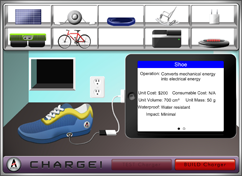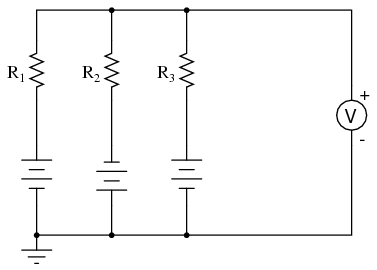Charge

During some natural disasters, like Hurricane Sandy, electricity to homes can be off for days or even weeks. Many people need their cell phones and tablets to contact utilities and other providers to reconnect their services and to tell loved ones they are safe. After a day or so of use, most devices require recharging. A number of new charging devices are now available on the market. Can you determine which device would be the best power source for charging your electronics? Get ready, charge!
What is a power source?
A power source, or power supply, provides electrical power to an electrical load. A common power source is a battery. Batteries typically convert chemical energy into electrical energy. AC lines, fuels cells, solar cells, generators, and alternators are also examples of power supplies.What is peak power?
Peak power is a measure of how much power can be output in a short period of time. A better measure of the continuous power output of a device is called RMS, which is the average power output over an extended period of use.What is voltage output?
The output voltage is the voltage actually required to operate a device. The input voltage from source is often too high or unsteady and must be lowered or stabilized using a voltage regulator or other devices.What is a mW×hr?
The milliwatt times hour (mW×hr) is a unit of electrical energy. The watt is a unit of power. A light bulb that operates at 50 Watts for one hour would have used 50 W×hr of energy during its period of operation.What is a charging cycle?
The charging cycle is the number of times a rechargeable battery can be charged and discharged before the battery starts to fail and lose its ability to store a charge. The higher the charging cycle value, the more times a rechargeable battery can be charged before you have to buy a new battery.What is an electrical schematic diagram?
An electrical schematic diagram is a short-hand visual representation of an electrical circuit that uses symbols to represent various devices in the circuit. The diagram shows the actual wiring of the circuit using symbols.)
What is a voltage regulator?
A voltage regulator converts the input voltage from a source that is too high or unsteady and changes it by lowering or stabilizing the voltage output.What is a capacitor?
A capacitor is an electrical device commonly found in circuits that stores electrical energy. A simple capacitor consists of two parallel conducting plates separated by a small distance. Factors affecting the energy stored by a capacitor are battery voltage, distance separating the plates, and the size of the plates.What is a resistor?
A resistor is an electrical device commonly found in circuits that opposes the flow of charge. A resistor is used to alter the current found in a circuit. As the resistance of a resistor increases, the current flow through an electrical circuit decreases (assuming a constant voltage). A material with a low resistance would have a high ability to conduct charge.Walkthrough
Tier 2 Lessons: Grades 7 - 12+
You need to log in to access this simulation.



